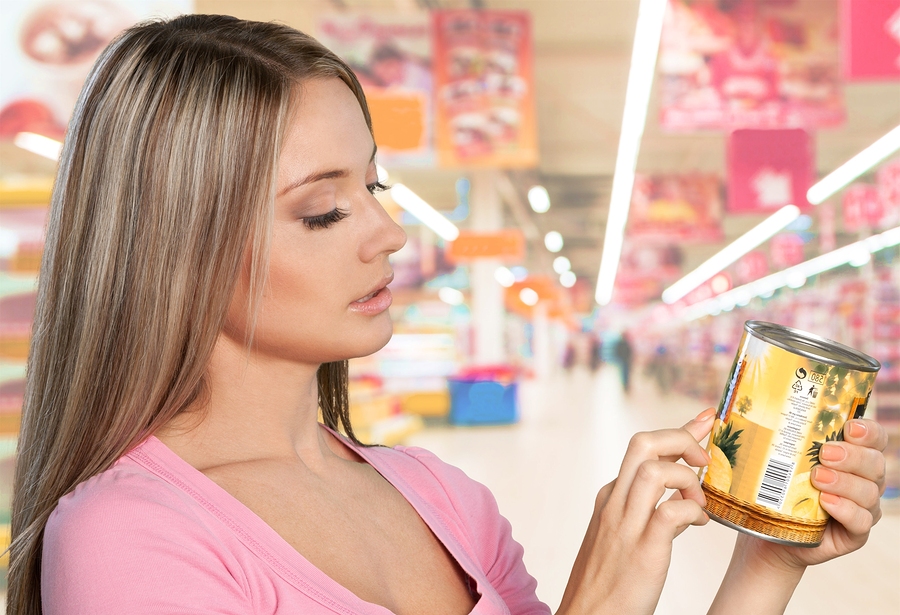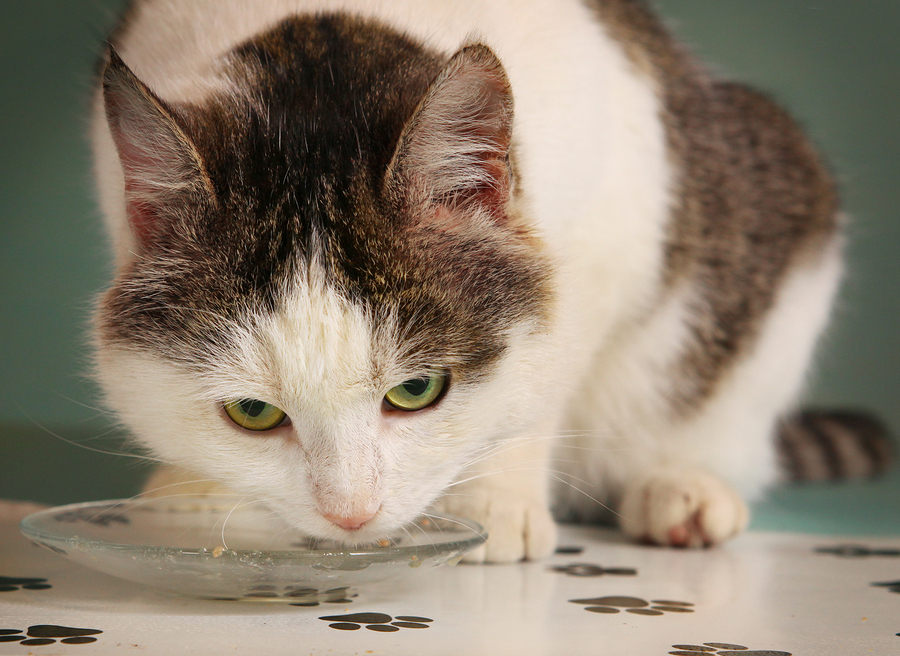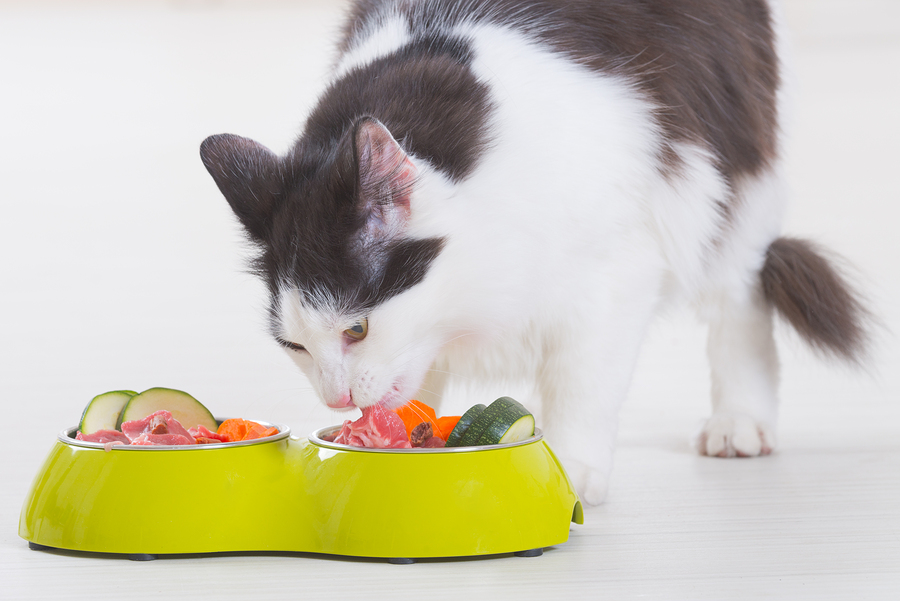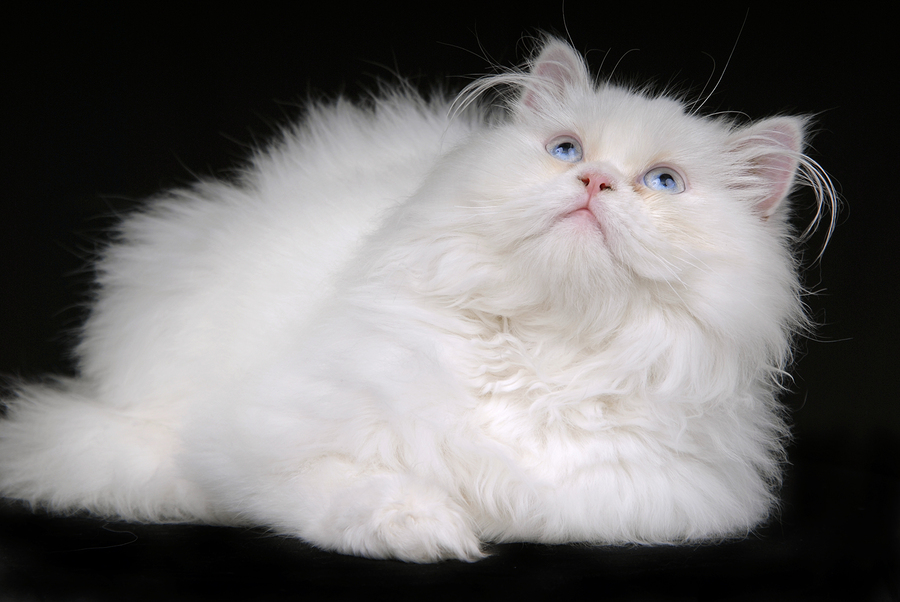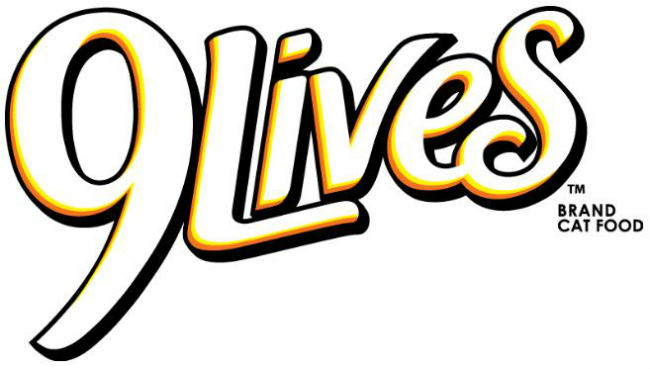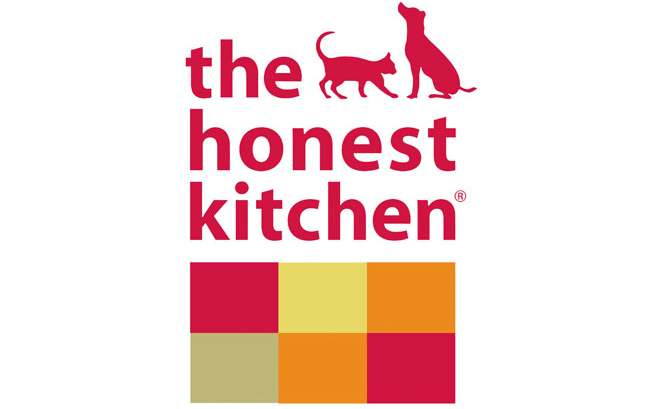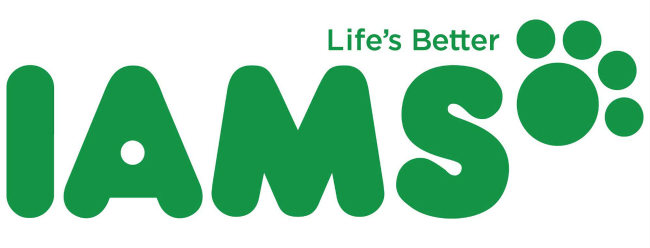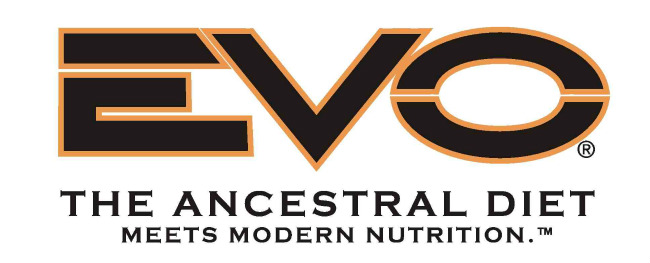In this Iams Proactive Health Adult Original with Chicken Cat Food review, we will analyze each of the ingredients in this food to see if this is actually a high quality cat food. Iams has a long line of cat food blends, some of which are higher quality and some of which are lower quality. Let’s take a look at their Iams Proactive Health Adult Original with Chicken Cat Food blend.
Ingredients In Iams Proactive Health Adult Original With Chicken Cat Food
Chicken, Chicken By-Product Meal, Corn Meal, Brewers Rice, Dried Beet Pulp, Natural Flavor, Poultry By-Product Meal, Dried Egg Product, Brewers Dried Yeast, Sodium Bisulfate, Fructooligosaccharides, Potassium Chloride, Choline Chloride, Fish Oil (preserved with mixed Tocopherols, a source of Vitamin E), DL-Methionine, Calcium Carbonate, Vitamins (Vitamin E Supplement, Niacin, Ascorbic Acid, Vitamin A Acetate, Calcium Pantothenate, Biotin, Thiamine Mononitrate (source of vitamin B1), Pyridoxine Hydrochloride (source of vitamin B6), Vitamin B12 Supplement, Riboflavin Supplement (source of vitamin B2), Inositol, Vitamin D3 Supplement, Folic Acid), Taurine, Minerals (Zinc Oxide, Manganese Sulfate, Copper Sulfate, Potassium Iodide, Cobalt Carbonate), Chicken Fat (preserved with mixed Tocopherols, a source of Vitamin E), L-Carnitine, Rosemary Extract.
Compare Pricing And Read Customer Reviews Here
Analysis Of The Top 5 Ingredients
Whenever you are reviewing a commercial cat food blend, it is good practice to pay
special attention to the first 5 ingredients listed. These ingredients make up the vast
majority of the nutritional content in the food. Let's take a look at the top 5 ingredients in
this cat food.
Chicken - Chicken is a very popular ingredient for pet food and in
this case, they are referring to whole chicken. This is a very high quality meat source and
we are pleased to see it listed. In dry cat foods, whole chicken loses about 80% of its
content during the cooking process. This is because chicken consists of about 80%
moisture. After the cooking process is complete, the amount of whole chicken remaining is
substantially reduced. However, in wet cat foods the cooking process is a bit different so
this is much less of a concern.
Chicken By Product Meal - While this ingredient does provide a
high amount of meat protein, this meat source is considered to be of lower quality than
many other meat sources. Chicken By-Product Meal is produced through a process of
cooking, drying and separation of fats and proteins from animal carcasses. It contains a
dehydrated combination of meat (or cuts or parts) including lungs, spleen, kidneys, brain,
livers, blood, bone, necks, undeveloped eggs and intestines. Usually, by-products are the
"left overs" that can't be used for human food consumption. The greatest fault of this
ingredient is the same trait that makes it so affordable and so commonly found in pet
foods. The unpredictability of what might (or might not) be included.
Corn Meal - Considered a low quality ingredient, corn meal is usually
used as a "filler ingredient" but provides almost no nutritional value to cats. This ingredient
is also a known allergy causing ingredient for many cats. We aren't all that thrilled to see
this ingredient listed.
Brewers Rice - Brewers rice is the small milled fragments of rice
kernels that have been separated from the larger kernels of milled rice. It is a processed
rice product that is missing many of its nutrients, but does provide a source of
carbohydrates. It is a by-product of rice milling and considered a lower quality filler
ingredient usually used in lower priced cat food blends. Usually, brewers rice is used to
make rice flour, but if the quality is too poor for rice flour, it will then be sold to pet food
or dairy feed companies. For many cats, this ingredient can cause allergies or digestion
issues. Most cats will not have any problems processing this food, but it's not one of the
better ingredients, either.
Dried Beet Pulp - Beet pulp is a by-product from the processing of
sugar beet and is a source of fiber and energy. It is popular among many pet food
companies due to its high availability and low price. The most common complaint about
this ingredient is that it causes digestion problems, most commonly a very hard stool or
diarrhea. It has also been known to cause bloat in some dogs and cats which can be very
serious if left unchecked.
Additional Ingredients Of Interest
While the top 5 ingredients make up approximately 90% of the nutritional quality of the foods, let’s dive a bit deeper to find out the quality of some of the remaining ingredients.
Natural Flavor - The term "natural flavor" is extremely vague and can
mean just about anything. In human foods, natural flavor is usually MSG or some similar
flavor enhancer. When pet food companies are asked what is in their "natural flavor
ingredients, they usually refuse to answer. There are a lot of things in the world considered
"natural" and they almost all have a flavor. Such generic terms can be indicative of poor
quality ingredients. While that's not always the case, the fact is, we don't really know what
this ingredient consists of and that is worrying.
Poultry By Product Meal - This ingredient is made from grinding
clean, rendered parts of poultry carcasses and can contain bones, offal and undeveloped
eggs, but only contains feathers that are unavoidable in the processing of the poultry
parts. This ingredient is not approved for human consumption, but is used frequently in
pet foods. This is because it can contain a lot of non-meat products like beaks, feet,
heads and bones. Since this ingredient is dried prior to cooking, the protein percentage is
quite high and that's a good indicator. However, poultry in general can legally contain a
number of birds and we aren't able to tell exactly what bird species have been used in
this ingredient. Be aware that the consistency of this ingredient may change from time to
time with a variation of poultry products being used.
Dried Egg Product - Derived from shell free eggs, this is a cheaper
source of protein used in place of higher quality meat proteins. Normally, this ingredient is
derived from waste products associated with the egg industry or egg products that have
been deemed unfit for human consumption.
Brewers Dried Yeast - Brewers dried yeast is made from a single-
celled fungus, called Saccharomyces cerevisiae. It is a very rich source of B vitamins and
supplies minerals and amino acids. It is known to support a normal healthy coat. This is
also an old remedy for flea and tick protection. This ingredient is generally a by-product of
alcohol production and there are no major health risks associated with this ingredient.
Sodium Bisulfate -This ingredient is a dry acid in crystal, granular, or
powder form that is used as a pH adjuster. This is not a very nutritious ingredient for cat
food. While it is probably fine in lower quantities, in higher quantities this can cause skin
irritation and diarrhea.
Research has shown that supplementation of fructooligosaccharides in the diet plays
an important role in managing Colitis.
Potassium Chloride - This chemical compound sometimes goes by
the name "trace minerals." It is a "metal halide salt" composed of potassium and
chlorine. It is used in medicine, scientific applications, and food processing. Since
potassium is an important nutrient for cats, this is a good way to supply it. It is also
commonly used as a replacement for salt and to balance the pH level of the food to meet
various requirements. Not only is it used in cat food, it is frequently used in human foods
and medications as well. There is some evidence to suggest small intestinal ulcers may
occur in cats after prolonged exposure to this ingredient, but this has yet to be proven or
disproven.
Choline Chloride - Like humans and many other species, cats require
choline. Almost all commercial pet food blends will contain supplemental choline. This
ingredient mostly helps with cell function.
Fish Oil - Fish oil is a popular supplement used by cat and dog
owners. In this case, the food is already supplemented with fish oil. This ingredient is high
in very healthy Omega-3 and Omega-6 fatty acids. This can lead to an improved coat,
healthier skin, boost to the immune system, lower blood pressure, and help improving
cognitive function in older pets. There are also some studies that show fish oil to help assist
with certain allergies in dogs and cats. This is a higher quality ingredient.
Methionine - Methionine is one of the 10-plus essential amino acids
that are required by both cats and dogs. For diets that contain minimal amounts of meat
proteins and are heavily weighted to vegetable proteins like soy or are low calorie foods
diluted with inert ingredients such as cereals and cellulose, there may be a need for
supplemental methionine. Read more on this page.
Calcium Carbonate - Calcium carbonate is a dietary supplement used
when the amount of calcium taken in the diet is not enough. Calcium is needed for healthy
bones, muscles, nervous system, and heart. Since many cat foods do not contain enough
calcium in the food naturally, it is often added as a supplemental inclusion as seen in this
food.
Vitamins - Only two vitamins (A and C) and two minerals (calcium
and iron) are required on the food label. Food companies can voluntarily list other vitamins
and minerals in the food. When vitamins or minerals are added to the food, or when a
vitamin or mineral claim is made, those nutrients must be listed on the nutrition label. So
while we don't know exactly what vitamins are being included here, it is unlikely that this
ingredient contains anything of lower quality.
Riboflavin Supplement - Riboflavin is found in various foods,
including milk and dairy products, fish, meats, green leafy vegetables, and whole grain and
enriched cereals and bread. It is a source of Vitamin B2. Due to the cooking process, most
cat foods do not include enough vitamins and minerals. In order to meet AFFCO standards,
most cat food will contain supplemental vitamins or minerals, such as is the case with this
ingredient. We are not aware of any major medical issues related to this ingredient and in
fact, a lack of vitamin B can be very serious for your cat.
Taurine - Taurine is an essential amino acid that is critical for
normal heart muscle function, vision, and reproduction in cats. Since cats are unable to
create proper levels of taurine in their body naturally, it must be supplemented in their
food. That's why you'll see this ingredient listed for so many different cat food blends.
For cat foods that contain enough high quality animal based proteins, a taurine
supplement may not be needed. However, most cat foods will need to add in additional
taurine in the form of a supplement to the food. Even when included as a supplement
instead, there is very low to almost zero health risk associated with this ingredient. In
fact, a lack of taurine can cause a slew of issues, so it's very important to make sure your
cat is receiving enough taurine in his or her diet.
Minerals - Only two vitamins (A and C) and two minerals (calcium
and iron) are required on the food label. Cat food companies can voluntarily list other
vitamins and minerals in the food. So, in this case, they have simply listed "minerals" but
we're not exactly sure what is included here. This ingredient is very unlikely to cause harm
to your cat, but it would be nice if they would voluntarily list the minerals being used here.
Chicken Fat - Chicken fat is a quality source of essential fatty acids
and an excellent source of energy. Fat has a positive effect on the immune system and
plays a beneficial role in stress response. Essential fatty acids are required for proper
growth, reproduction, normal skin structure and a healthy coat. Because chicken fat
contains virtually no protein, it's use does not cause allergic reactions associated with the
use of fresh chicken or chicken meal which contain high amounts of protein. Many times,
mixed tocopherols, which are a natural source of Vitamin E activity, are used as a natural
preservative to maintain freshness. This is considered a higher quality fat source in pet
food.
L Carnitine - This ingredient is very common in pet foods. It is an
important nutrient that acts as a transport for fatty acids and assists in the cellular
production of energy. A deficiency of L-Carnitine can lead to a large magnitude of health
problems. This ingredient is especially used in dog and cat formulas designed for
overweight pets as there is strong evidence to suggest it helps with weight loss.
Rosemary Extract - This ingredient is normally listed pretty low on
the ingredients list, but is very common in pet foods, especially with higher end and
"natural" pet foods. This ingredient has been mostly used as a taste enhancer and natural
preservative. Recently, there have been some growing concerns that this ingredient may
increase the risk of seizures in cats, but so far there is no conclusive evidence to
substantiate these claims.
Feeding Guidelines For Iams Proactive Health Adult Original With Chicken
Weight of Cat (lbs.)……….Feed Daily
4 lbs………. 1/4 – 1/3 cups
8 lbs………. 1/2 – 2/3 cups
12 lbs………. 3/4 – 1 cups
16 lbs………. 1 – 1 1/3 cups
22 lbs………. 1 1/3 – 1 3/4 cups
Guaranteed Analysis For Iams Proactive Health Adult Original With Chicken
Crude Protein, minimum……….32.00%
Crude Fat, minimum……….15.00%
Crude Fiber, maximum……….3.00%
Moisture, maximum……….10.00%
Ash, maximum……….7.00%
Magnesium, maximum……….0.10%
Calcium, minimum……….0.75%
Phosphorus, minimum……….0.65%
Phosphorus, maximum……….1.20%
Taurine, minimum……….0.15%
L-Carnitine, minimum……….80 mg/kg*
Omega-6 Fatty Acids, minimum……….2.06%*
Omega-3 Fatty Acids, minimum……….0.21%*
Minerals, average……….6.81%
Minerals, minimum……….5.40%
Minerals, maximum……….8.20%
Calcium, average……….0.97%
Calcium, maximum……….1.35%
Phosphorus, average……….0.84%
Metabolizable Energy……….3,693 kcal/kg
Crude Protein……….32.80%
Crude Oil……….15.50%
Crude Ash……….6.80%
Crude Fiber……….1.80%
Moisture……….8.00%
Calcium……….1.00%
Phosphorus P……….0.90%
* Not recognized as an essential nutrient by the AAFCO Cat Food Nutrient Profiles
Compare Pricing And Read Customer Reviews Here
Our Overall Opinion Of Iams Proactive Health Adult Original With Chicken Cat Food
As far as big box grocery store cat food is concerned, this isn’t a terrible food to feed to your cat. However, compared to the many options you have available and based on the ingredients overview, we believe this is about an average quality cat food. While there are some good ingredients included, we also see the presence of some lower quality ingredients as well. While your cat would likely live a healthy life on this food, we recommend looking at some possible alternatives.


